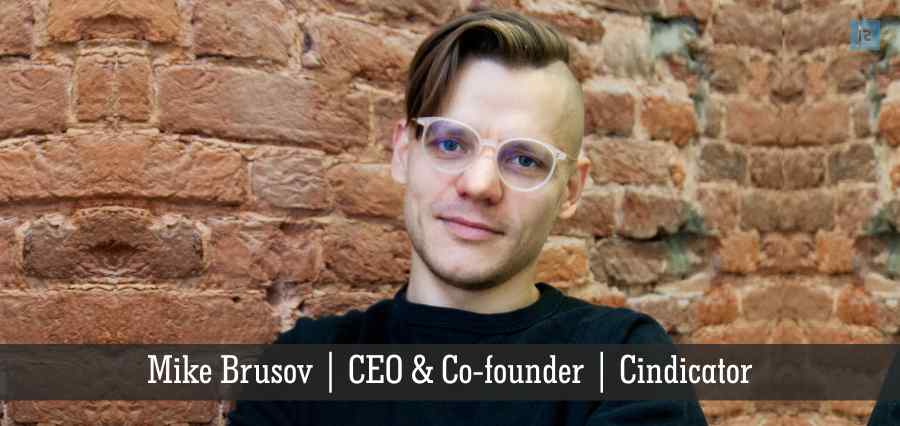Founded in 2015, the whole idea behind Cindicator started with the “Wisdom of the Crowd” hypothesis. It’s based on the observation that forecasts from a decentralized group are more accurate than any individual forecasts made by experts. Cindicator offers Hybrid Intelligence, which is a combination of machine learning and human intelligence. Right now it is focused on asset management which means trader’s use the company’s Hybrid Intelligence based predictive analytics in their investment decisions.
Rewarding Questions
Cindicator asserts that its solution is simple and unique. It asks questions about different market events through its app for iOS, Android, and the web. The company has over 120,000 analysts registered on its platform and they answer these questions. They get points for accurate forecasts and then get a reward in crypto at the end of the month.
After their answers are collected, Cindicator applies over 30 machine learning models to create a predictive indicator for the event in question. These indicators are distributed to traders who hold its tokens. In September 2017, the company raised $15 million through a token sale. These tokens are the only way to access its indicators and other analytical products.
Co-founding Ideas
Mike Brusov is the Co-founder and CEO of Cindicator. His role is to offer strategic guidance and to align various teams working to create Hybrid Intelligence. He launched Cindicator in 2015. Initially, he thought that collective forecasts could be monetized by partnerships with analytical agencies, brands or corporations. Soon, a small team began to assemble and he was joined by two Co-founders, Yuri Lobyntsev and Artem Baranov.
Quite a Journey
Mike, Yuri and Artem along with the team, realized it at an early stage that predictive analytics is most valuable in finance and asset management. They made a pivot, rebranded as Cindicator, and Mike moved to New York City to pitch the company’s services to hedge funds. Their idea was to sell indicators via APIs to institutional investors. Some hedge funds liked their product. Yet they wanted to monopolize access to these signals. They even got an offer to acquire the technology and team. It was tempting, but they had larger goals for Cindicator.
In parallel, the company was watching the cryptocurrency phenomenon with great interest. Co-founder and CTO, Yuri Lobyntsev suggested that they should create an internal token economy to decentralize their distribution model and create feedback loops between analysts who contribute their intelligence and traders who take risks based on indicators. The idea resonated strongly with the crypto community. In September 2017 Cindicator raised $15 million through a token sale after receiving over $500 million worth of applications to contribute funds.
Trends to Look for
According to Cindicator, several trends are worth mentioning. First, blockchain and crypto are turning the world more global, enabling decentralized business models. Cindicator has analysts from practically every country in the world. Paying them in US dollars or other currencies would be a nightmare for the company. With crypto, it instantly sends thousands of transactions in minutes. Second, FinTech is chipping away at the most lucrative niches in finance. Previously, huge banks were dominating in every way.
Now FinTech startups are focusing on just one or two areas and start from scratch without any cumbersome legacy technology that plagues the big guys. Third, machine learning is becoming more powerful and easier to use. There are plenty of ready packages, libraries, and models that one can quickly deploy if one has the date.
Privacy is Priority
Cindicator believes that the common challenge for many tech companies is in handling data and dealing with privacy. Hence it is quite explicit with how it uses data. Analysts registered in the company’s app understand that it uses it to create predictive indicators. The company asserts that it’s the only way to address this which is to be transparent and very clear with how it uses data.
The result is the crowdsourcing of intelligence, the Cindicator team explains. Social media giants have larger data sets of collective views and insights, but they don’t have the users’ permissions to use this data. With Cindicator, on the other hands, people eagerly share their views, creating a full record of their forecasts. All their statistics are available on a single screen and at any time they can download all their data. According to Cindicator, it’s a win-win: analysts can learn from their past mistakes, and the company can train its machine learning models on an ever-growing data set.
Competition is Irrelevant
According to the enterprise, at this stage, competition is largely irrelevant. There are companies approaching similar problems of making decisions amid high uncertainty, but everybody is tackling this from a different angle. It’s up to the market to decide what works best. At the same time, it believes in symbiotic partnerships. When companies with similar views on the world unite resources and help each other, they can develop faster than if everyone exists in a silo.
A Greater Vision
According to Cindicator, it’s just the beginning. Its vision is on a larger scale. The company believes that through the symbiosis of humans and machines Cindicator will become an important decision-making tool in any field with a high degree of uncertainty: politics, science, technology, business ventures, even sports and arts. Uncertainty is only going increase as the world becomes even more complex.

Cindicator

